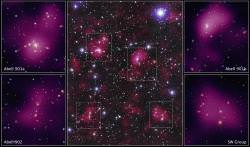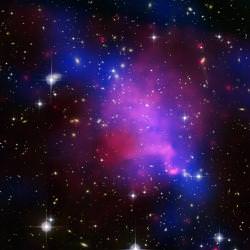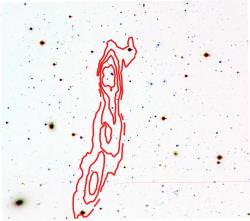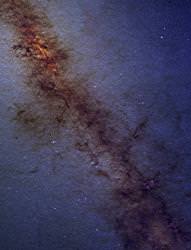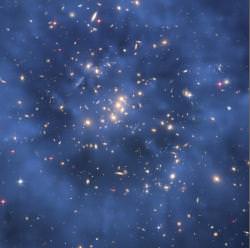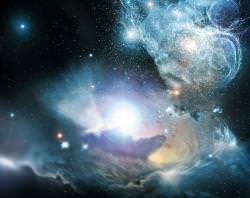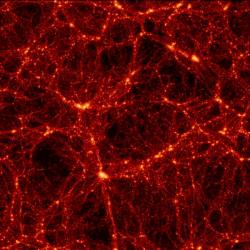Enough of this small stuff, let’s look at the big picture. The really really big picture. In this case, one of the largest patches of the sky ever observed by the Hubble Space Telescope. A new detailed survey was released today that combines 80 separate Hubble images together. In addition to a framework of galaxy clusters, the images show the distribution of dark matter that holds the clusters together – and tears it all apart.
The dark matter survey is part of the Space Telescope Abell 901/902 Galaxy Evolution Survey (STAGES), which looks at one of the larger structures in the Universe: the Abell 901/902 superclusters. This is a region of tremendous violence and chaos. Galaxies are being pulled into the core of the superclusters, and getting distorted and stripped of their gas and dust.
And one of the primary forces of this violence comes from the completely invisible dark matter that makes up the bulk of the matter in the region. Instead of being equally distributed, though, this dark matter has pooled into enormous clumps.
An international team of astronomers used Hubble to measure how individual galaxies are distorted by clouds of dark matter. The dark matter is invisible, but it does have mass, which can pull at the light as it moves past. The astronomers know what different galaxies should probably look like, and then can figure out how much dark matter is in between, distorting the view. It’s actually pretty incredible to see the dark matter map imposed over top of the visible light image.
“Thanks to Hubble’s Advanced Camera for Surveys, we are detcting for the first time the irregular clumps of dark matter in this supercluster,” said Catherine Heymans of the University of British Columbia. “We can even see an extension of the dark matter toward a very hot group of galaxies that are emitting X-rays as they fall into the densest cluster core.”
The Hubble study identified 4 separate regions where the dark matter has pooled into dense clumps, adding up to 100 trillion times the mass of the Sun. They can even make out irregular clumps of dark matter in the supercluster. These areas match the locations where hundreds of old galaxies have already experienced the violent passage from the outskirts of the supercluster into the denser regions.
Original Source: Hubble News Release

